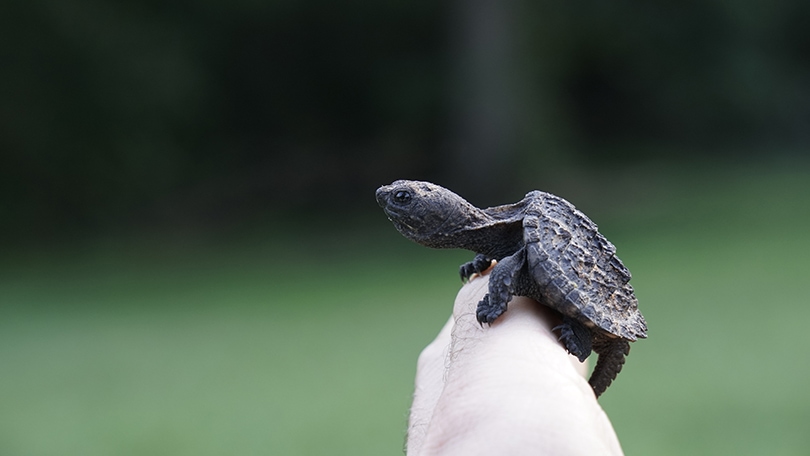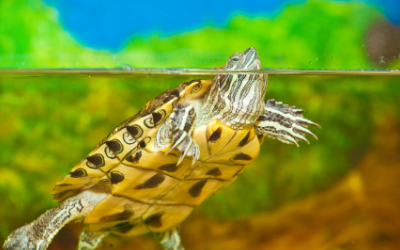In this article, you will learn about the importance of monitoring and adjusting the feeding frequency for growing baby turtles. We will discuss why it is crucial to keep a close eye on their feeding habits and make necessary adjustments as they grow. By understanding the unique needs of baby turtles, you will be able to provide them with the right amount of food at the right times, ensuring their healthy growth and development. So let’s dive into the world of baby turtles and explore how to monitor and adjust their feeding frequency for optimal care.
Why is Monitoring and Adjusting Feeding Frequency Important?
Feeding frequency is a crucial aspect of caring for baby turtles. It directly affects their growth, development, and overall health. By monitoring and adjusting their feeding frequency, you can ensure they receive the proper nutrition and avoid potential health issues that may arise from overfeeding or underfeeding. In this article, we will explore the importance of monitoring and adjusting feeding frequency for growing baby turtles and provide guidelines for determining the ideal feeding frequency at different stages of their growth.
Understanding the Nutritional Needs of Baby Turtles
Before we delve into monitoring and adjusting feeding frequency, it is essential to understand the nutritional needs of baby turtles. Baby turtles, just like their adult counterparts, require a balanced diet that consists of protein, vegetables, and calcium. The right balance of these nutrients is crucial for their growth and development.
Protein is essential for the growth of muscles, tissues, and shells. Vegetables provide vitamins and minerals necessary for overall health, while calcium is crucial for the development of strong and healthy shells. By ensuring a well-rounded and balanced diet, you can provide the necessary nutrients for their healthy growth.
Preventing Overfeeding and Obesity
One of the key reasons why monitoring and adjusting feeding frequency is important is to prevent overfeeding and obesity in baby turtles. Overfeeding can lead to excessive weight gain and subsequent health issues. Baby turtles, just like any other animal, have specific caloric requirements that must be met. Feeding them excessively or too frequently can lead to them consuming more calories than they can burn, resulting in unwanted weight gain.
Obesity can have severe consequences for baby turtles. It can lead to shell deformities, limited mobility, respiratory problems, and a decreased life expectancy. By monitoring their feeding frequency and adjusting it accordingly, you can help prevent overfeeding and ensure they maintain a healthy weight.
Promoting Healthy Growth and Development
Monitoring and adjusting feeding frequency also play a crucial role in promoting the healthy growth and development of baby turtles. By providing them with a nutritionally balanced diet and feeding them the appropriate amount at the right frequency, you can ensure they receive all the necessary nutrients for their development.
Adequate feeding frequency and proper nutrition help baby turtles develop strong shells, healthy organs, and robust immune systems. It also contributes to their overall vitality and well-being. By regularly monitoring their feeding habits and adjusting accordingly, you can ensure they grow into healthy and thriving adult turtles.
Avoiding Nutritional Deficiencies
On the other end of the spectrum, underfeeding can lead to nutritional deficiencies in baby turtles. If they do not receive enough food or are consistently underfed, they may not obtain the essential nutrients they need for proper development. This can result in delayed growth, weakened immune systems, and an increased susceptibility to diseases.
By monitoring their feeding frequency, you can ensure they are receiving enough food to meet their nutritional needs. Adjusting the feeding frequency based on their growth rate and body condition will help prevent underfeeding and associated nutritional deficiencies.
Factors to Consider when Monitoring Feeding Frequency
Several factors influence the optimal feeding frequency for baby turtles. By considering these factors, you can tailor their feeding schedule to meet their specific needs. Let’s explore some of the key factors to consider when monitoring feeding frequency for growing baby turtles.
Age and Size of the Baby Turtle
The age and size of the baby turtle play a significant role in determining their feeding frequency. Hatchlings and early juveniles require more frequent feedings as they have higher growth rates. They have higher energy demands due to their small size and rapid development. As they grow older and larger, their feeding frequency can be gradually reduced.
It is essential to keep in mind that baby turtles grow at different rates depending on the species. Some species grow faster than others, and their size should be considered when determining the feeding frequency. Consult a reptile veterinarian or do thorough research on the specific species to ensure you are feeding your baby turtle appropriately based on their age and size.
Species and Habitat of the Baby Turtle
The species and habitat of the baby turtle also influence their feeding frequency. Different species have different dietary preferences and requirements. Researching the natural diet of the specific species will provide valuable insight into their feeding habits and frequency.
In addition, turtles from different habitats may have varying metabolic rates and activity levels. Turtles from warmer environments tend to have higher metabolic rates, requiring more frequent feedings. Conversely, turtles from cooler environments may have lower metabolic rates and require fewer feedings. Understanding the species and their natural habitat will help you determine the appropriate feeding frequency for your baby turtle.
Activity Level and Metabolism of the Baby Turtle
The activity level and metabolism of the baby turtle should be taken into consideration when monitoring feeding frequency. Some turtles are naturally more active and have higher energy requirements. These turtles may require more frequent feedings to meet their energy needs.
Conversely, turtles with lower activity levels and slower metabolisms may require fewer feedings. Overfeeding a less active turtle can lead to weight gain and potential health problems. Monitoring their activity level and adjusting the feeding frequency accordingly will help ensure they receive the proper amount of food based on their individual needs.
Growth Rate and Body Condition of the Baby Turtle
The growth rate and body condition of the baby turtle are important factors to consider when monitoring feeding frequency. Baby turtles should be growing steadily and maintaining a healthy body condition. Monitoring their growth rate and body condition will help you determine if the current feeding frequency is appropriate.
If a baby turtle is growing too quickly or becoming overweight, it may be necessary to reduce the feeding frequency. Conversely, if a baby turtle is not growing or is losing weight, it may be a sign of underfeeding, and the feeding frequency may need to be increased. Regularly assessing their growth rate and body condition will help you make informed decisions about adjusting their feeding frequency.
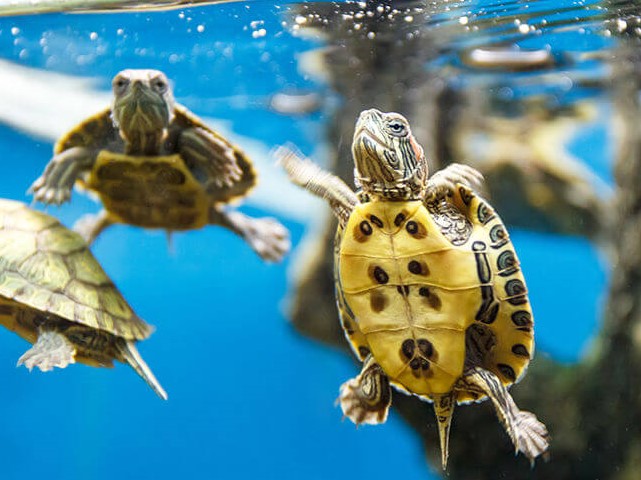
Signs of Overfeeding or Underfeeding
It is essential to be aware of the signs of overfeeding or underfeeding in baby turtles. Monitoring their behavior, appearance, and overall condition will help you identify any potential feeding issues and make the necessary adjustments. Let’s explore some common signs of overfeeding or underfeeding in baby turtles.
Excessive Weight Gain or Loss
One of the most obvious signs of overfeeding or underfeeding in baby turtles is excessive weight gain or loss. Baby turtles should be growing steadily and maintaining a healthy weight. If you notice that your baby turtle is rapidly gaining weight or becoming overweight, it may be a sign of overfeeding. Conversely, if your baby turtle is not gaining weight or is losing weight, it may indicate underfeeding.
Regularly weighing your baby turtle and monitoring their weight gain or loss will help you assess their feeding habits and make adjustments as needed.
Shell Deformities and Softening
Overfeeding or underfeeding can lead to shell deformities and softening in baby turtles. Excessive weight gain from overfeeding can put pressure on their developing shells, leading to deformities. On the other hand, underfeeding and nutritional deficiencies can result in weak, soft shells.
Regularly inspecting your baby turtle’s shell for any abnormalities or soft spots will help you detect possible feeding issues. If you notice any deformities or softening of the shell, it may be an indication that the feeding frequency or diet needs to be adjusted.
Digestive Issues and Diarrhea
Another sign of feeding issues in baby turtles is digestive problems and diarrhea. Overfeeding can put a strain on their digestive system, leading to digestive upset and loose stools. On the other hand, underfeeding can result in malnutrition, leading to poor digestion and related digestive issues.
Monitoring their stool consistency and frequency will help you assess their digestive health. If you notice frequent diarrhea or abnormal stool consistency, it may be a sign that their feeding frequency needs adjustment.
Lack of Energy and Slow Growth
Inadequate or excessive feeding can impact the energy levels and growth rate of baby turtles. If a baby turtle is not receiving enough food, it may lack the energy needed for proper growth and development. They may appear lethargic, exhibit slow growth, and overall lack vitality.
Conversely, overfeeding can lead to a decreased energy level as they struggle with the excess weight. They may become sluggish and show a decrease in activity.
Monitoring their energy levels, growth rate, and overall behavior will provide valuable insights into their feeding habits. If you notice a lack of energy or slow growth, it may be an indication that their feeding frequency needs adjustment.
Behavioral Changes
Changes in behavior can also indicate possible feeding issues in baby turtles. Overfeeding can lead to behavioral changes such as decreased activity and reduced interaction. On the other hand, underfeeding may result in increased aggression or food-seeking behavior.
Regularly observing your baby turtle’s behavior and temperament will help you identify any feeding-related issues. If you notice any significant behavioral changes, it may be a sign that their feeding frequency or diet needs to be adjusted.
Determining the Ideal Feeding Frequency
Determining the ideal feeding frequency for baby turtles can be a complex task. It requires careful observation and assessment of various factors. While the following guidelines can help you get started, it is essential to consult a reptile veterinarian or expert for personalized advice based on your baby turtle’s specific needs.
Consulting a Reptile Veterinarian or Expert
Consulting a reptile veterinarian or expert is highly recommended when determining the ideal feeding frequency for baby turtles. They have the knowledge and experience to provide valuable guidance based on the specific needs of your baby turtle.
A reptile veterinarian or expert can assess your baby turtle’s age, size, species, growth rate, and overall condition to provide customized feeding recommendations. They can also address any specific concerns or issues you may have regarding your baby turtle’s feeding habits.
Observing the Baby Turtle’s Feeding Behavior
Observing your baby turtle’s feeding behavior is another essential aspect of determining the ideal feeding frequency. Pay attention to how they consume their food, the rate at which they finish their meals, and their overall appetite.
If your baby turtle is consistently leaving food behind or taking a long time to finish their meals, it may be an indication that the feeding frequency is too high. Conversely, if they eagerly finish their meals quickly and show signs of hunger shortly after being fed, it may indicate that the feeding frequency needs to be increased.
Assessing the Nutritional Content of the Diet
Assessing the nutritional content of your baby turtle’s diet is crucial for determining the ideal feeding frequency. Ensure that their diet consists of a balanced mix of protein, vegetables, and calcium. The proportions of each nutrient should be appropriate for their age, size, and species.
Research the specific dietary requirements of your baby turtle’s species and consult a reptile veterinarian or expert if needed. They can help you determine the ideal balance of nutrients and recommend specific foods that meet their nutritional needs.
Monitoring Body Condition and Growth Rate
Regularly monitoring your baby turtle’s body condition and growth rate is essential for determining the ideal feeding frequency. A healthy baby turtle should be growing steadily and maintaining a suitable body condition.
To assess their body condition, observe their shell for any signs of abnormalities or deformities. You should be able to feel the outline of their bones without excessive flesh covering. If your baby turtle is becoming overweight or losing weight, it may be an indication that the feeding frequency needs adjustment.
Keep track of their growth rate by regularly measuring their size and weight. If they are not growing or are growing too slowly, it may be a sign of underfeeding. If they are growing too quickly or becoming overweight, it may indicate overfeeding.
By continuously monitoring their body condition and growth rate, you can make informed decisions about adjusting their feeding frequency.
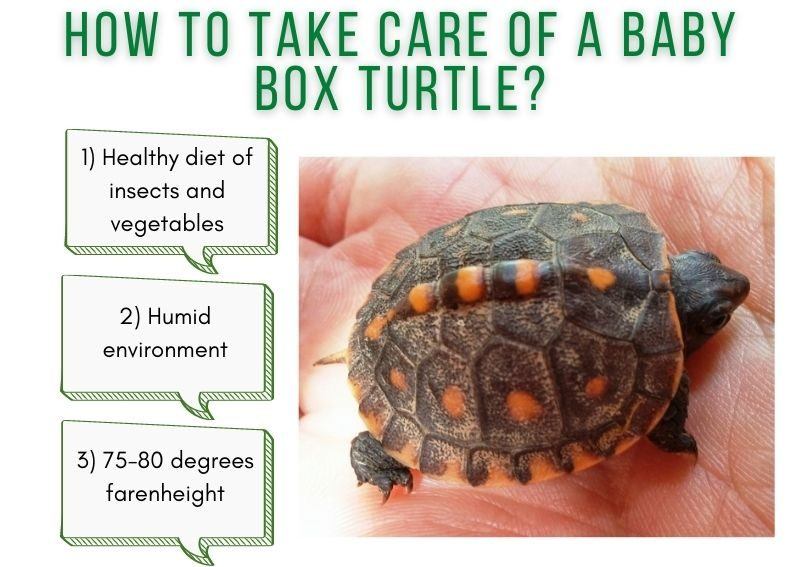
Adjusting Feeding Frequency for Different Stages of Growth
As baby turtles grow, their nutritional needs and feeding frequency will change. Understanding the different stages of growth and adjusting their feeding frequency accordingly is crucial for their development. Let’s explore how feeding frequency should be adjusted for different stages of growth.
Feeding Frequency for Hatchlings and Early Juveniles
Hatchlings and early juvenile turtles require more frequent feedings than older turtles due to their higher growth rates and energy demands. They should be fed approximately two to four times a day.
Their diet should consist primarily of protein-rich foods such as live or frozen insects and invertebrates. Commercial turtle pellets or soft foods can also be included. Remember to balance their diet with vegetables and provide supplemental calcium and vitamin D3.
Feeding Frequency for Late Juveniles and Subadults
Late juveniles and subadult turtles have slower growth rates and may require fewer feedings than hatchlings and early juveniles. They should be fed approximately once or twice a day.
Their diet should consist of a mix of protein, vegetables, and calcium-rich foods. Leafy greens and fresh vegetables should be included in their diet regularly. Commercial turtle pellets or soft foods can also be offered. Supplemental calcium and vitamin D3 should be provided to support their shell development.
Transitioning to Adult Feeding Frequency
As baby turtles mature into adults, their feeding frequency should be further reduced. Adult turtles generally require feeding once every one to two days.
Ensure they continue to receive a balanced diet consisting of protein, vegetables, and calcium-rich foods. Adjust the proportions and type of food based on their species and overall health. Regularly monitor their body condition and adjust the feeding frequency accordingly.
Feeding Schedule and Proportions for Baby Turtles
Establishing a consistent feeding schedule and providing the appropriate proportions of each nutrient is vital for baby turtles’ optimal growth and development. Let’s explore some guidelines for creating a feeding schedule and balancing the diet for baby turtles.
Establishing a Consistent Feeding Schedule
Providing a consistent feeding schedule is essential for baby turtles. Feeding at the same time every day helps establish a routine and ensures they receive regular and proper nutrition.
Divide their daily feeding amount into the appropriate number of meals based on their age and size. Feed them at regular intervals throughout the day, ensuring they have enough time to digest their food before the next meal.
Balancing Protein, Vegetables, and Calcium
Balancing the protein, vegetable, and calcium proportions in your baby turtle’s diet is crucial for their overall health and development. The specific proportions will vary depending on their age, size, and species.
Generally, their diet should consist of approximately 40-50% protein, 30-40% vegetables, and 10-20% calcium-rich foods. Adjust the proportions based on their specific nutritional requirements and consult a reptile veterinarian or expert for personalized advice.
Providing Variety in Diet and Feeding Methods
Providing variety in your baby turtle’s diet and feeding methods is beneficial for their overall health and well-being. Offering a wide range of foods ensures they receive a diverse array of nutrients and prevents boredom.
Include a variety of protein sources such as live or frozen insects, invertebrates, and commercial turtle pellets. Offer a selection of leafy greens and fresh vegetables to provide essential vitamins and minerals. Rotate their diet regularly to provide different flavors and textures.
Additionally, consider using different feeding methods such as offering food on land and in water. This allows them to exhibit natural feeding behaviors and stimulates their appetite.
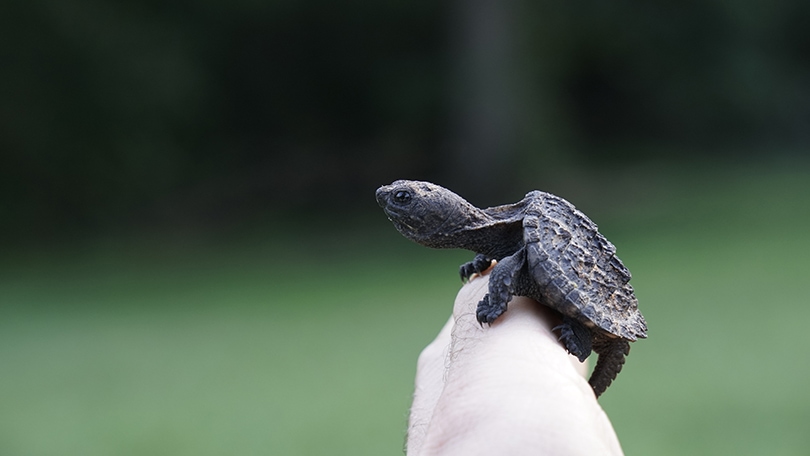
Recommended Foods for Baby Turtles
Providing the right foods for baby turtles is crucial for their growth and development. Let’s explore some recommended food options for baby turtles.
Live or Frozen Insects and Invertebrates
Live or frozen insects and invertebrates are excellent protein sources for baby turtles. They mimic their natural diet and provide essential nutrients. Some popular options include crickets, mealworms, waxworms, and earthworms. Ensure the insects are small enough for your baby turtle to consume easily.
Leafy Greens and Fresh Vegetables
Leafy greens and fresh vegetables are essential for providing vitamins and minerals to baby turtles. Some suitable options include kale, spinach, collard greens, dandelion greens, and romaine lettuce. It is important to offer a variety of greens to ensure a balanced nutrient intake. Avoid or limit high-oxalate vegetables such as spinach and beet greens, as they can interfere with calcium absorption.
Commercial Turtle Pellets or Soft Foods
Commercial turtle pellets or soft foods are convenient options for providing a balanced diet to baby turtles. Look for high-quality brands that offer a blend of protein, vegetables, and calcium. Make sure the pellets or soft foods are appropriate for their age and size.
Supplemental Calcium and Vitamin D3
Supplemental calcium and vitamin D3 are important for the healthy development of a baby turtle’s shell. Calcium can be provided in the form of cuttlebone, calcium powder, or calcium-rich foods such as kale and collard greens. Vitamin D3 can be obtained through exposure to appropriate UVB lighting or by providing a vitamin D3 supplement formulated for reptiles.
It is essential to consult a reptile veterinarian or expert to ensure the appropriate supplementation and dosages for your baby turtle.
Monitoring and Recording Feeding Data
Monitoring and recording your baby turtle’s feeding data is a valuable practice for tracking their progress and identifying any potential issues. Let’s explore some ways to effectively monitor and record feeding data.
Keeping Track of Feeding Schedule and Amounts
Maintain a logbook or digital document to record your baby turtle’s feeding schedule and the amount of food provided at each meal. Note the time and the specific foods offered. This record will help you track their overall feeding habits and detect any irregularities or changes.
Tracking Weight and Growth Progress
Regularly weigh your baby turtle and record their weight in your logbook or document. This will provide valuable information about their growth rate and overall health. Keeping track of their weight progression will help you identify any feeding issues or changes in their growth patterns.
Documenting any Changes or Issues
Document any changes or issues you observe during feeding, such as refusal to eat, changes in appetite, or any digestive problems. This information will be useful for discussing any concerns with a reptile veterinarian or expert.
By diligently monitoring and recording feeding data, you can identify any trends or patterns in your baby turtle’s feeding habits and make informed decisions about their nutrition and feeding frequency.
Common Mistakes to Avoid
When monitoring and adjusting feeding frequency for baby turtles, it is important to be aware of common mistakes that can impact their health. Let’s explore some typical mistakes to avoid.
Overfeeding with High-Protein Foods
Overfeeding baby turtles with high-protein foods can lead to excessive weight gain, obesity, and health issues. While protein is an essential component of their diet, it should be balanced with vegetables and calcium-rich foods. Ensure that protein sources account for no more than 40-50% of their overall diet.
Neglecting Calcium and Vitamin D3 Supplementation
Neglecting calcium and vitamin D3 supplementation can result in shell deformities and softening in baby turtles. Calcium and vitamin D3 are crucial for proper shell development. Ensure they receive adequate calcium through supplementation or calcium-rich foods. Expose them to appropriate UVB lighting or provide a vitamin D3 supplement formulated for reptiles.
Inconsistency in Feeding Schedule and Amounts
Inconsistency in feeding schedule and amounts can disrupt your baby turtle’s routine and impact their overall health. Ensure you establish a consistent feeding schedule and provide the appropriate amounts of food. Avoid drastic changes in feeding frequency or portion sizes, as this can cause stress and digestive problems.
Not Providing Enough Variety in Diet
Offering a variety of foods ensures your baby turtle receives a wide range of nutrients and prevents nutritional deficiencies. Avoid sticking to a single type of food or relying heavily on one protein source. Rotate their diet regularly and provide a mix of different proteins, vegetables, and calcium-rich foods.
Environmental Factors Affecting Feeding Frequency
Environmental factors play a significant role in determining the feeding frequency of baby turtles. Let’s explore some key environmental factors to consider.
Temperature and Lighting Conditions
The temperature and lighting conditions in a baby turtle’s enclosure can influence their metabolic rate and activity level. Turtles generally have higher metabolic rates and energy needs in warmer temperatures. Ensure the enclosure provides an appropriate temperature gradient, allowing them to thermoregulate and have access to both warm and cooler areas.
Provide appropriate lighting conditions, including UVB lighting, to support their vitamin D3 synthesis and overall health. Follow the manufacturer’s instructions for UVB light placement and replacement.
Water Quality and Availability
Clean water is vital for a baby turtle’s overall health, hydration, and digestion. Ensure the water in their enclosure is clean and free from toxins or contaminants. Regularly monitor and maintain water quality parameters such as temperature, pH, and ammonia levels.
Make sure there is always a fresh source of water available in their enclosure for drinking and bathing. Baby turtles should have access to both water and a dry basking area.
Enclosure Size and Enrichment
The size of the enclosure and the presence of appropriate enrichment are essential for a baby turtle’s overall well-being and activity level. A confined and overcrowded enclosure can lead to stress and decreased appetite. Provide an adequately sized enclosure that allows for exploration and natural behaviors.
Include various environmental enrichment such as basking areas, hiding spots, and climbing structures. This will promote physical activity, mental stimulation, and a healthy appetite.
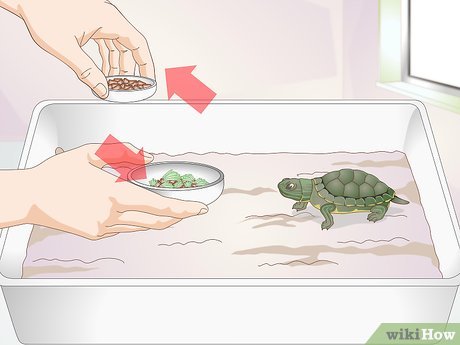
Common Feeding Problems and Solutions
Feeding problems can occur with baby turtles for various reasons. Let’s explore some common feeding problems and possible solutions.
Refusal to Eat or Loss of Appetite
If your baby turtle refuses to eat or shows a loss of appetite, it may be due to environmental stress, illness, or incorrect feeding conditions. Ensure the enclosure is clean and provides appropriate temperature and lighting conditions. Review their diet and ensure it is well-balanced and appropriate for their age and size. If the issue persists, consult a reptile veterinarian for further investigation.
Competitive Feeding or Bullying
In multi-turtle enclosures, competitive feeding or bullying can occur. This can result in some turtles not receiving adequate food or feeling stressed during feeding time. Observe their feeding behavior and consider separating them during meal times. Provide multiple feeding stations to reduce competition and ensure each turtle receives enough food.
Incorrect Feeding Techniques or Equipment
Using incorrect feeding techniques or equipment can hinder your baby turtle’s ability to eat properly. Use appropriate feeding utensils such as tweezers or feeding tongs to offer live insects or soft foods. Ensure the food is small enough for them to consume easily. Research appropriate feeding techniques for your baby turtle’s specific needs.
Addressing Nutritional Imbalances and Deficiencies
Identifying and addressing nutritional imbalances or deficiencies is crucial for your baby turtle’s overall health. If you suspect a nutritional issue, consult a reptile veterinarian or expert. They can guide you in adjusting their diet, supplementation, and overall feeding habits to address any deficiencies.
Consulting a Reptile Veterinarian or Expert
Regular check-ups and consultations with a reptile veterinarian or expert are essential for maintaining your baby turtle’s health and well-being. They can provide thorough health assessments, offer personalized guidance, and address any concerns or issues you may have regarding their feeding habits.
Reptile veterinarians or experts have the knowledge and experience to provide specialized advice based on your baby turtle’s specific needs. They can perform thorough examinations, provide nutritional recommendations, and assist in assessing their overall growth and development.
Conclusion
Monitoring and adjusting feeding frequency is crucial for ensuring the health and well-being of growing baby turtles. By understanding their nutritional needs, considering various factors, and observing their feeding habits, you can provide them with a balanced diet and prevent potential health issues.
By monitoring their body condition, growth rate, and behavior, you can identify any feeding-related issues and make informed decisions about their feeding frequency. Consulting a reptile veterinarian or expert, establishing a consistent feeding schedule, and providing a varied diet will contribute to the healthy growth and development of your baby turtle.
Remember to record and monitor their feeding data, avoid common feeding mistakes, and consider environmental factors that may affect their feeding frequency. By following these guidelines and seeking professional guidance, you can ensure your baby turtle receives the best possible care and nutrition throughout their growth journey.
